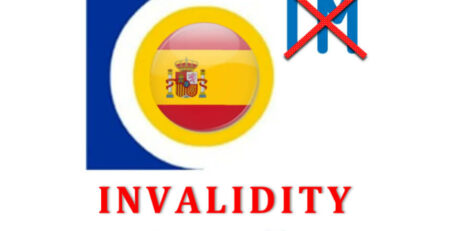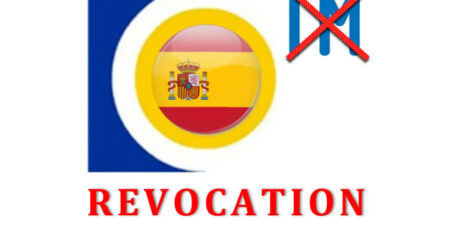Entry into force of the Unitary Patent of the European Union
On June 1, 2023, one of the great milestones in the history of world intellectual property came into force: the Unitary Patent system, which will provide inventors and companies with a more efficient and simplified way of protecting their inventions in the member countries of the European Union.
As already announced by the EPO last February, Germany had presented its ratification instrument for the Agreement on a Unified Patent Court (UPC) with the Council of the European Union in order for the Unitary Patent Package to enter into force for the current 17 States.
In this article, we will explore some details of this new system, its implications and how it will affect inventors and companies in Europe.
What is the European Union Unitary Patent?
The European Union Unitary Patent is a new system of intellectual property protection that will cover the member countries of the European Union that have adopted it. It is the most important reform in the history of the European patent system since its creation in 1973.
The new system will enable uniform patent protection in all participating EU member states through a single patent application filed with the European Patent Office (EPO) and provide a centralized platform for Europe-wide patent litigation before the Unified Patent Court. This will simplify the process of protecting inventions and reduce associated costs.
Implications of the EU Unitary Patent
The entry into force of the European Union Unitary Patent will have several important advantages for inventors and companies in Europe. Some of these advances can be summarized as follows:
- Simplification of the application process: With the European Union Unitary Patent, inventors and companies will be able to file a single application covering multiple European countries. This will reduce the administrative burden and simplify the process of protecting inventions.
- Cost reduction: By filing a single unitary patent application instead of multiple national applications, the costs associated with protecting inventions will be significantly reduced. This will especially benefit small and medium-sized companies that may have limited resources.
- Increased protection: The European Union Unitary Patent will provide uniform protection in all member countries. This will ensure that inventions are more effectively protected throughout the European Union.
- More efficient litigation: With the European Union Unitary Patent, a Unified Patent Court will also be established. This court will handle litigation related to unitary patents, allowing for a more efficient and consistent process throughout the European Union.
Which countries will participate in the EU Unitary Patent?
So far 17 European Union member states have already joined the new system: Germany, France, Italy, the Netherlands, Sweden, Denmark, Austria, Belgium, Finland, Bulgaria, Greece, Luxembourg, Malta, Portugal, Slovenia, Lithuania and Estonia. More countries are expected to join in the future.
In the case of Spain, it is one of the EU Member States that opposed both the Unitary Patent project and the Unified Patent Court, for reasons of language; it requested that Spanish should be one of the official languages in addition to English, French and German and that European patents granted by the EPO and with legal effects in Spain should be translated into Spanish. It also objected to the Spanish courts losing jurisdiction over nullity and infringement decisions regarding patents in Spain.
What will be the language of the EU Unitary Patent?
The European Union Unitary Patent shall be filed in English, French or German. Applicants may choose in which language to file their application and, once the patent is granted, it will be translated into the language chosen by the applicant.
Advantages and disadvantages of the EU Unitary Patent
The European Union Unitary Patent presents significant advantages for inventors and companies in Europe, but there are also some potential disadvantages to consider. Let’s look at some of the key advantages and disadvantages:
Advantages
- Protection in multiple countries: The unitary patent will make it possible to obtain protection in several European countries with a single patent application, which will simplify and reduce the costs associated with validation, translation and subsequent payment of maintenance fees, which will now be done centrally for all the countries that comprise it.
- Reduced administrative burden: By filing a single patent application, inventors and companies will avoid the need to deal with multiple administrative procedures corresponding to the validation in each country (need of a national agent) and their translations into each local language concerned.
- Coherence and efficiency: The creation of the Unified Patent Court will allow greater coherence and efficiency in litigation related to unitary patents throughout the European Union, except in countries that have not joined, including Spain.
Disadvantages
- Language of submission: Although submission in several languages is permitted, subsequent translation may generate additional costs for applicants.
- Not all EU countries participate: Although several countries will participate in the European Union Unitary Patent, not all EU countries will be part of the system. This means that unitary patents will not be valid in all European countries, but will have to be acted separately in those few countries, including Spain.
Conclusion
The entry into force of the European Union Unitary Patent marks an important step forward in the protection of intellectual property in Europe. This new system will simplify the process of protecting inventions and reduce the associated costs for inventors and companies. While there are significant advantages, it is also important to consider the potential disadvantages and to take into account the participating countries.
Ultimately, the EU Unitary Patent offers a simpler and more effective way to protect inventions in Europe, which will boost innovation and economic growth in the region.
As with any new regulation, new developments and events that will condition its future norms are to be expected. Expectations are very promising since, in just one month since the EPO launched its transitional measures (January 1, 2023), more than 2,000 applications for unitary effect and/or deferral of the concession had already been filed.
You can continue to be informed about this topic in this blog or you can contact ABECSA to solve your doubts. We also recommend reading the Unitary Patent Guide of the EPO.







